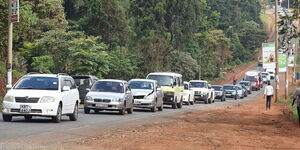A close analysis of the 2016 KCSE results released by Education Cabinet Secretary Fred Matiang’i in December last year has revealed that there could have been a mix-up in the gender distribution data, such that the grades awarded to boys were labelled as girls’ scores and vice versa.
In the results released at Shimo La Tewa Secondary School in Mombasa, a total of 571,161 candidates were graded, with 299,268 or 52 percent being female and 271,893 or 48 percent being male.
However, this data was inconsistent with the number of students who sat the national examinations.
According to KNEC figures, 574,125 candidates had sat the KCSE exam, of which 273,130 (48 percent) were female and 300,995 (52 percent) male.
The consequence of that discrepancy is such that 26,138 more girls were graded compared to those who sat their exams - a practical impossibility.
In the same vein, a total of 29,102 boys who sat for their KCSE were not graded, a number that would have raised concerns if it was detected.
For the statistics announced by the Education CS to tally with the KNEC figures, the 299,268 girls and 271,893 boys Matiang'i said sat for the exam should be switched to reflect that 299,268 boys and 271,893 girls did the exam.
Upon switching the gender numbers, Kenyans.co.ke found that the data was consistent.
There were 1,237 girls who sat for their exams but were not graded with the number of boys who were not graded being 1,727.
Therefore, 271,893 girls who sat the exam added to 1,237 that were not graded totals to 273,130 while the boys figure (299,268 + 1,727) amounts to 300,995 as indicated by KNEC.
During the announcement of the results, Matiang'i explained that a total of 2,964 students were not graded after they failed to sit for all the minimum seven subjects as required for grading.
The 2016 KCSE results raised national concerns of the boy child being forgotten to the extent that they were badly outperformed by the girls.












